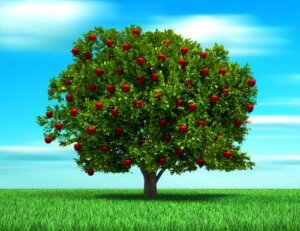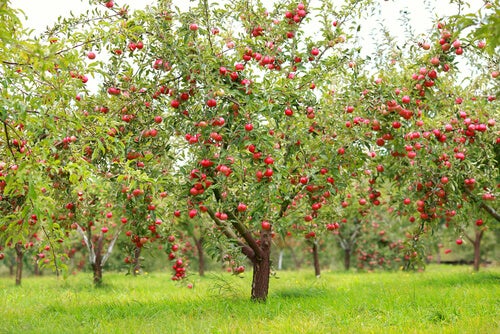The Parable of the Tree, a Story About Parental Love

The parable of the tree is a beautiful metaphor about what most parents are capable of doing for their children. It’s about a child in a faraway place and an apple tree.
Once upon a time, there was little boy who couldn’t wait to be near an apple tree. He would play among its branches, run around it, and enthusiastically eat its fruit. Thus, the tree was quite pleased with the little boy, who treated it so affectionately and always wanted to be near it.
Time went by and the child grew up. Then, he started going to school and went to play close to the tree with his friends. The tree was fulfilled, as it loved the laughter and the children running around. Thus, it was a happy tree in those years.

An unexpected absence
The years continued to pass, and the child grew up. The parable of the tree says they saw each other less and less. This is because the boy was busy with his new friends and interests. The apple tree felt sad, although it understood it because it was natural.
One day, the boy returned. He was a young man and the tree was quite happy to see him. It had been so long since they’d been together! However, the tree noticed that the boy looked sad and asked him what was wrong. Was he not enjoying his wonderful youth?
The boy told the tree that he was really sad. He wanted to have many things, but he didn’t have enough money. For instance, he wanted a bicycle, new clothes, and cash to invite his friends over, but couldn’t.
The apple tree spoke to him gently. “I’m full of apples. Why don’t you take them and sell them in the market? Then, you’ll have the money you need”. The boy thought it was a good idea and followed through. However, he didn’t come back for a long time.
A new return
Several years went by and the boy didn’t return. The apple tree missed him but understood that the boy couldn’t spend his life running around next to an old apple tree. Thus, the tree felt happy because it knew that the boy was happy.
One afternoon, the boy visited the tree and it felt immensely happy. He wasn’t a boy anymore, but a man. He looked sad. The tree asked him what was the matter and the young man said that he wanted to get married. However, he had no money to build a house and would have to postpone his plans.
The tree affectionately said, “Don’t worry, just take my branches and use them to build your beautiful home”. The young man’s face lit up. He took the branches, built a wonderful house, and got married.

The parable of the tree
Many years later, the man returned and told the tree that he had two sons and that he wanted to make a boat and go rowing with them. However, he didn’t have enough money to buy the materials he needed. The apple tree didn’t hesitate for a second and said, “Take my trunk! You can build a beautiful boat with it”. And so the man did.
The man disappeared again for many, many years. The tree feared the worst this time. However, when it least expected it, an old man approached it. It was his boy! The same one who was now an old man. He looked sad, though. Unfortunately, the tree had nothing more to offer him, no branches or trunk.
The old man approached it and hugged it. Then, he cried and said, “I’m all alone!” “You’re not,” the tree told him. “I’m just roots but they’re still big and strong. You can rest here”. The old man did until his last breath.
We hope you enjoyed the parable of the tree. It represents the love of a parent, who never stops giving.
All cited sources were thoroughly reviewed by our team to ensure their quality, reliability, currency, and validity. The bibliography of this article was considered reliable and of academic or scientific accuracy.
- Alvarez, V. S. (1953). Cuentos y narraciones (Vol. 71). Editorial Porrúa.
This text is provided for informational purposes only and does not replace consultation with a professional. If in doubt, consult your specialist.








